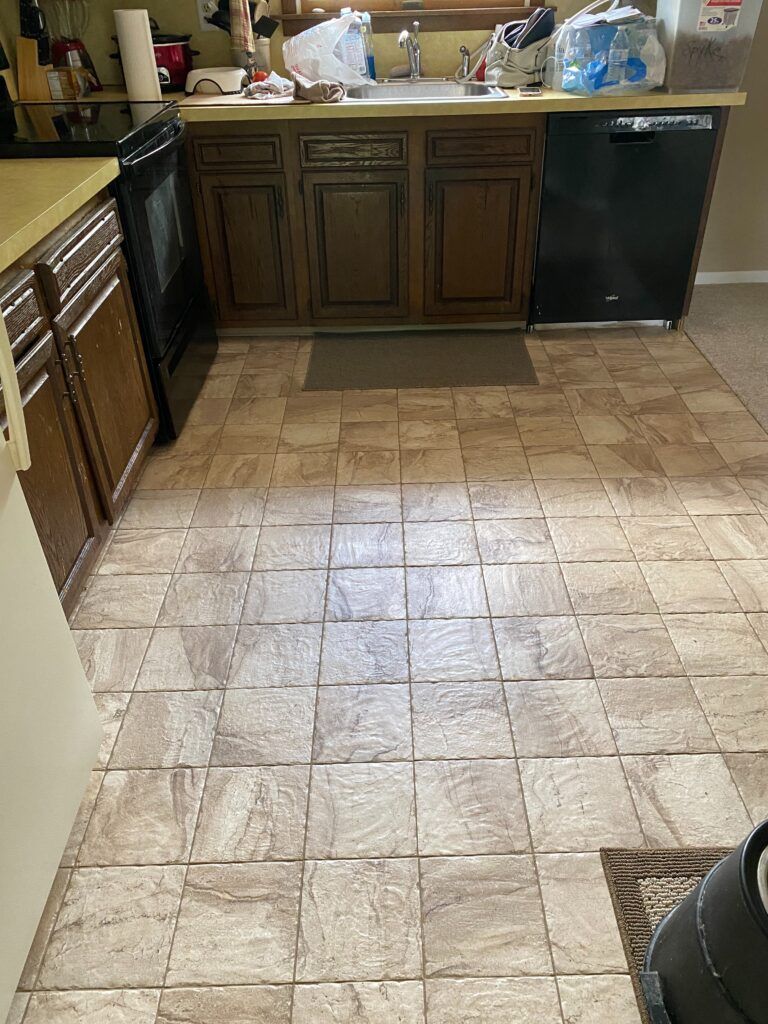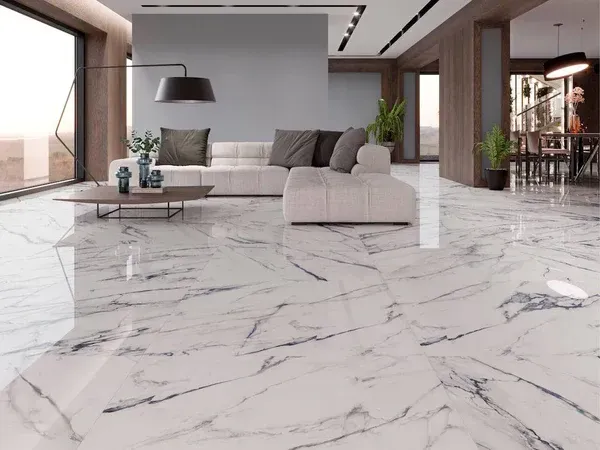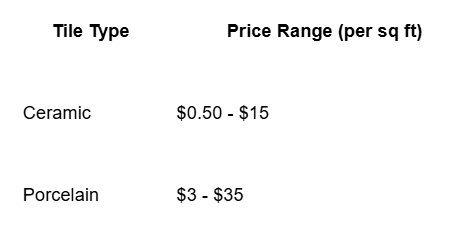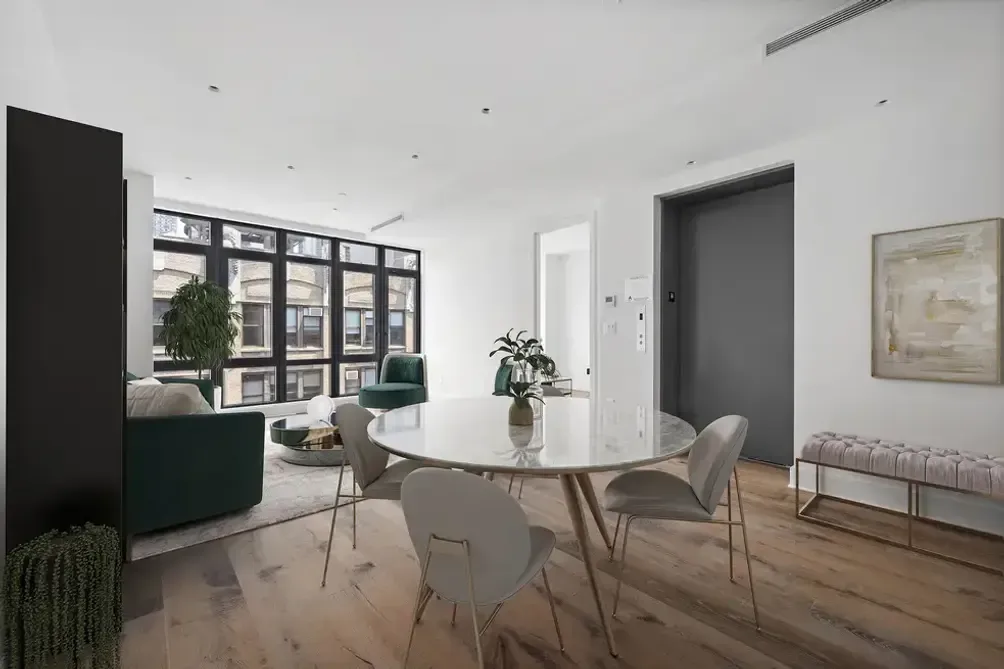Choosing the right tile for your LA home can make a big difference in looks and performance. Ceramic and porcelain are two popular options, each with unique traits. Let's compare them to help you pick the best fit.
Ceramic tiles are made from clay and tend to be less expensive than porcelain, with prices ranging from $3-$50 per square foot. They come in many colors and designs, making them great for walls or areas with less foot traffic. Porcelain tiles are denser and more resistant to damage, which can be ideal for busy spaces in your home.
When choosing between ceramic and porcelain, think about where you'll use the tiles. Porcelain works well in high-traffic areas or spots that might get wet, while ceramic can be a good pick for dry spaces or wall applications. Your budget and style preferences will also play a role in your decision.

Fundamentals of Tile Materials
Ceramic and porcelain tiles are made from different materials and processes. This affects their properties and best uses in homes.
Ceramic Tile Composition
Ceramic tiles are made from clay, minerals, and water. The mixture is shaped and fired in a kiln. The tiles are then glazed for color and protection.
Ceramic tiles have a porous body. This makes them less water-resistant than porcelain. They work well in low-moisture areas like living rooms and bedrooms.
The clay used in ceramic tiles is less refined. This makes them easier to cut and install. It also makes them more prone to chipping.
Ceramic tiles come in many colors and designs. The glaze on top can be matte, glossy, or textured. This variety makes them popular for decorative uses.
Porcelain Tile Composition
Porcelain tiles are made from fine, dense clay. The clay is mixed with feldspar and other minerals. It's fired at very high temperatures.
This process makes porcelain tiles harder and less porous than ceramic. They absorb less than 0.5% water. This makes them great for bathrooms, kitchens, and outdoor areas.
Porcelain tiles can be glazed or unglazed. Unglazed tiles have color throughout the body. This hides chips and scratches better.
The dense composition makes porcelain tiles very strong. They resist wear, stains, and moisture damage. This durability comes at a higher cost than ceramic tiles.
Porcelain works well in high-traffic areas. It's also good for radiant floor heating systems due to its heat conductivity.
Comparative Analysis
Ceramic and porcelain tiles have distinct characteristics that affect their performance in LA homes. Let's examine their key differences in durability, moisture resistance, and aesthetics.
Durability and Strength
Porcelain tiles are denser and more resistant to damage than ceramic tiles. This makes porcelain a better choice for high-traffic areas in your LA home.
Ceramic tiles can chip more easily but are still durable for many applications. They work well in areas with less foot traffic or where you plan to replace flooring more frequently.
For outdoor spaces exposed to LA's sunny climate, porcelain's strength gives it an edge. It resists cracking from temperature changes better than ceramic.
Water and Moisture Resistance
Porcelain tiles have a lower water absorption rate than ceramic, making them ideal for bathrooms and other wet areas in your LA home.
You can use porcelain tiles confidently in showers, pool areas, and outdoor patios. They resist water damage and staining from moisture.
Ceramic tiles are less water-resistant but still suitable for many indoor applications. Use them in kitchens, living rooms, and bedrooms where moisture exposure is limited.
For LA's occasional rainy days, porcelain flooring near entrances can help prevent water damage.
Aesthetic and Finishing Options
Both ceramic and porcelain tiles offer a wide range of colors, patterns, and textures for your LA home.
Ceramic tiles are often easier to cut and shape, allowing for more intricate designs and custom layouts. You can find ceramic tiles that mimic natural materials like wood or stone.
Porcelain tiles can be made to look like almost any material, including high-end marble or granite. They often have color that extends through the entire tile, hiding chips better.
For a modern LA home, large-format porcelain tiles can create a sleek, seamless look. Ceramic tiles work well for creating colorful patterns or mosaic designs in accent areas.

Applications in LA Homes
LA homeowners have unique needs when it comes to tile choices. The climate and lifestyle in Los Angeles influence which tiles work best in different areas of the home.
Indoor Flooring Preferences
In LA homes, ceramic and porcelain tiles are popular for indoor flooring. Porcelain tiles are very durable and resist wear from foot traffic. This makes them great for high-use areas like entryways and living rooms.
Ceramic tiles offer more design options and lower costs. You'll find them in many LA bedrooms and home offices. Both types keep homes cool in the warm LA climate.
For open floor plans, large format tiles create a seamless look. Light colors can make spaces feel bigger and brighter. This works well in LA's indoor-outdoor lifestyle.
Outdoor Tiling Considerations
LA's mild weather means outdoor living spaces are used year-round. For patios and pool decks, porcelain tiles are often the top choice. They resist fading from sun exposure and don't absorb water.
Slip-resistant textures are important for safety around pools. Look for tiles with a high coefficient of friction. Lighter colors stay cooler underfoot in the LA sun.
Frost isn't a big concern in LA, but choose frost-resistant tiles for any outdoor areas. This protects against rare cold snaps. Textured tiles also hide dirt better in outdoor spaces.
Bathroom and Kitchen Use
In LA bathrooms, both ceramic and porcelain work well. Porcelain's water resistance makes it ideal for shower floors. Ceramic's lower cost lets you splurge on designer wall tiles.
For kitchen backsplashes, ceramic offers endless design options. Its lower heat resistance isn't an issue behind stoves. On countertops, porcelain's durability shines.
In both rooms, large format tiles mean fewer grout lines to clean. This is great for busy LA lifestyles. Choose light colors to brighten spaces without windows.
Remember to seal grout in wet areas. This prevents staining and mold growth in LA's humid coastal areas.
Installation and Maintenance
Installing and maintaining ceramic and porcelain tiles require different approaches. The methods you choose can affect how long your tiles last and how good they look over time.
Installation Procedures
Ceramic tiles are easier to install than porcelain. You can cut them with a simple tile cutter or wet saw. The softer material allows for quicker adjustments during installation.
Porcelain tiles need special tools and more skill to install. Their hardness makes them trickier to cut and shape. You'll need a wet saw with a diamond blade for precise cuts.
Both types need a level subfloor and proper adhesive. Porcelain often requires a stronger mortar due to its lower porosity. Make sure to use the right grout for each tile type to prevent cracking or staining.
Long-term Maintenance
Ceramic tiles are easy to clean with regular sweeping and mopping. Their glazed surface resists stains but can scratch more easily than porcelain.
Porcelain tiles need less upkeep. Their dense composition makes them highly resistant to stains, scratches, and moisture. Regular sweeping and occasional damp mopping are usually enough.
Both types benefit from sealing, especially in high-traffic areas. Reseal ceramic tiles yearly, while porcelain may only need it every few years. Clean spills quickly on both to prevent staining.
Avoid harsh cleaners on either type. Use pH-neutral products to protect the tile surface and grout. Replace damaged tiles promptly to maintain the floor's integrity and appearance.

Cost Comparison and Budgeting
When planning your LA home's tile project, it's crucial to consider the costs of ceramic and porcelain tiles. Both options have different price points that can affect your budget.
Ceramic tiles are generally less expensive than porcelain tiles. You can expect to pay between $0.50 to $15 per square foot for ceramic tiles.
Porcelain tiles, on the other hand, typically cost $3 to $50 per square foot. The higher price reflects their durability and water resistance.
Keep in mind that prices can vary based on quality, design, and brand. Here's a quick comparison:

When budgeting, don't forget to factor in installation costs. Professional installation can add $4 to $14 per square foot to your project.
You should also consider long-term costs. While porcelain tiles are pricier upfront, their durability may save you money on replacements in the future.
Remember to get quotes from multiple suppliers and installers. This will help you find the best deal for your LA home's tile project.
Conclusion
Choosing between ceramic and porcelain tiles depends on your specific needs and budget. Ceramic tiles are more affordable and work well for low-traffic areas or wall installations. They're easier to cut and install yourself.
Porcelain tiles offer superior durability and water resistance, making them ideal for high-traffic areas, outdoor spaces, and moisture-prone rooms. They require less maintenance but come at a higher cost.
For your Los Angeles home, consider factors like room usage, moisture exposure, and your budget. Both options can enhance your space with a wide range of styles and colors.
Need help deciding? Los Angeles Flooring Company can guide you through the selection process. Our experts will assess your needs and recommend the best tile option for your home. We offer professional installation services to ensure your new floors look stunning and last for years.
Remember, the right choice will depend on your unique situation. With expert advice and quality installation, you'll enjoy beautiful, durable floors that suit your lifestyle and budget perfectly.


